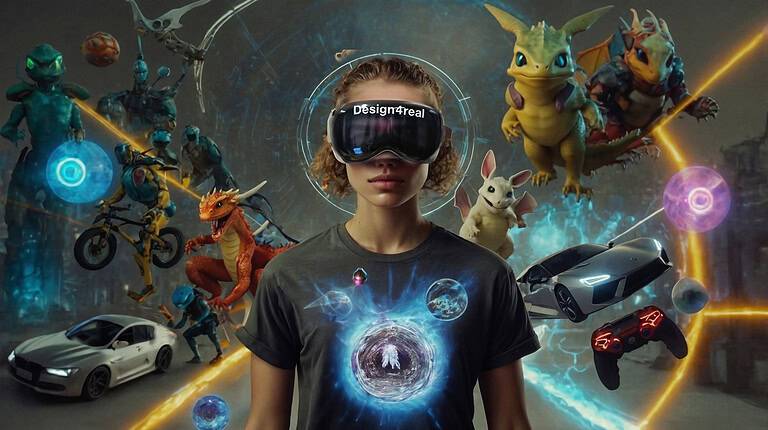Technical challenges of VR hardware
Despite significant advances in virtual reality (VR) hardware in 2023, there are still some significant technical challenges. Here are some of the critical areas:
- Resolution and field of viewOne of the biggest problems is the "fly screen effect", where users can see the spaces between the pixels, giving the impression of looking through a fly screen. To solve this problem, we need higher resolution displays. However, this brings its own challenges, such as increased data processing and performance requirements. In addition, most VR headsets do not yet offer a full 180° field of view, which can limit immersion. Achieving a wider field of view without sacrificing quality or performance is a major challenge.
- Latency: Latency is another critical issue for VR hardware. Any noticeable delay between the user's actions and the VR environment's response can cause discomfort and nausea. Although significant improvements have been made, truly imperceptible latency remains a challenge, especially as VR experiences increase in complexity and quality.
- Computing requirements: High-quality VR requires significant computing power. This means that most VR systems must be connected to a powerful PC or game console, which limits their portability and accessibility. Increasing the power of standalone VR devices while remaining lightweight, convenient, and affordable is a significant hurdle.
- TrackingAccurate and responsive tracking of the user's movements is critical to creating an immersive VR experience. Current systems struggle with tracking issues, especially when accurately capturing full body movements, subtle hand gestures or when the user is outside the defined "play area".
- Energy consumption and battery life: Especially with wireless, standalone VR devices, power consumption is a critical issue. High-quality VR experiences require a lot of power, which can drain batteries quickly. This limits the length of VR sessions and can lead to overheating issues. Developing more efficient hardware and power systems is an important challenge.
- Comfort and ergonomics: Many users find VR headsets uncomfortable when worn for extended periods of time because of their weight, the heat they generate, or the pressure they exert on the face. Improving the comfort and ergonomics of VR headsets is an ongoing challenge and critical to driving wider adoption of VR technology.
- Social interaction: One of the main attractions of VR is the possibility of social interaction in virtual spaces. However, it remains a challenge to create natural, intuitive ways for users to interact in VR. This includes technical issues such as realistic avatar movement, eye tracking, and facial expressions, as well as broader design challenges.
- Accessibility and inclusion: There is a need to make VR experiences accessible to all, including people with disabilities. This means not only physical adaptations, but also designing software and experiences that are inclusive and can be enjoyed by everyone, regardless of their physical abilities or limitations.
- Health problems: VR can lead to health issues such as nausea, eye strain, and even psychological effects from prolonged use. Understanding these effects and designing hardware and experiences to mitigate them is a significant challenge.
In conclusion, it remains to say that VR and AR technology has made great strides in recent years to overcome the problems mentioned above. However, there is still room for improvement.





